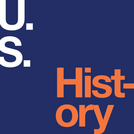
This site discusses how women were involved in the moral reform of the 1830s and 1840s. Links to original documents.
- Subject:
- Social Studies
- Material Type:
- Case Study
- Date Added:
- 12/01/2023

This site discusses how women were involved in the moral reform of the 1830s and 1840s. Links to original documents.

Exhibition of photographic portraits taken by Civil War-era photographer Mathew Brady, who made portraits of many illustrious Americans on both sides of the conflict before, during, and after the war. Includes an animated explanation of how photographs were made during Brady's lifetime, a biographical note, and dozens of examples of Brady's work that confirm his status as a photographic and photojournalistic pioneer.

Four documents establishing black mutual assistance and self-help organizations from the late-eighteenth and early-nineteenth centuries. A link to each document is provided.

U.S. History is designed to meet the scope and sequence requirements of most introductory courses. The text provides a balanced approach to U.S. history, considering the people, events, and ideas that have shaped the United States from both the top down (politics, economics, diplomacy) and bottom up (eyewitness accounts, lived experience). U.S. History covers key forces that form the American experience, with particular attention to issues of race, class, and gender.Senior Contributing AuthorsP. Scott Corbett, Ventura CollegeVolker Janssen, California State University, FullertonJohn M. Lund, Keene State CollegeTodd Pfannestiel, Clarion UniversityPaul Vickery, Oral Roberts UniversitySylvie Waskiewicz


Political Corruption in Postbellum America
Key Political Issues: Patronage, Tariffs, and Gold
Farmers Revolt in the Populist Era
Social and Labor Unrest in the 1890s

By the end of this section, you will be able to:
Explain the labor-intensive processes of cotton production
Describe the importance of cotton to the Atlantic and American antebellum economy


U.S. History is designed for a two-semester American history sequence. It is traditional in coverage, following a roughly chronological outline, and using a balanced approach that includes political, economic, social, and cultural developments. At the same time, the book includes a number of innovative and interactive features designed to enhance student learning. Instructors can also customize the book, adapting it to the approach that works best in their classroom.